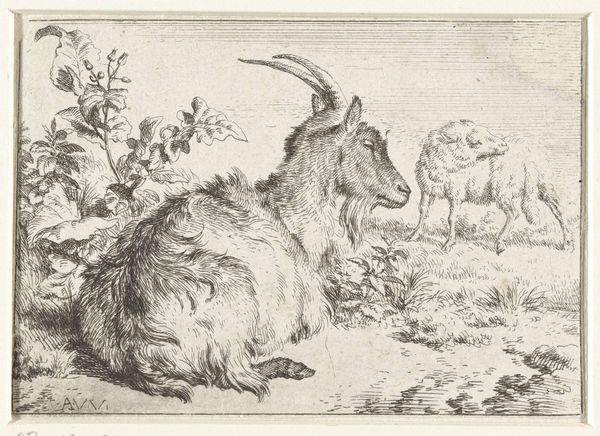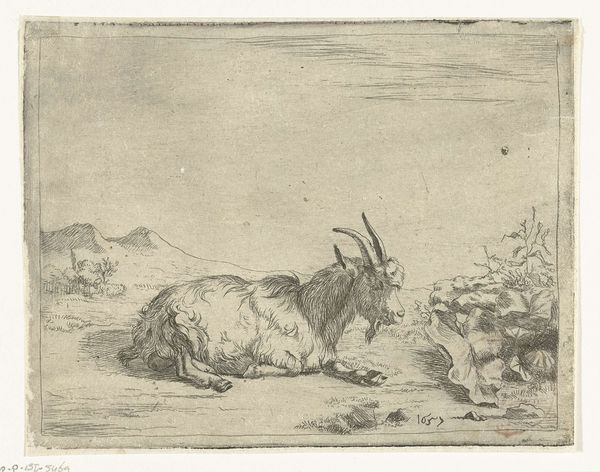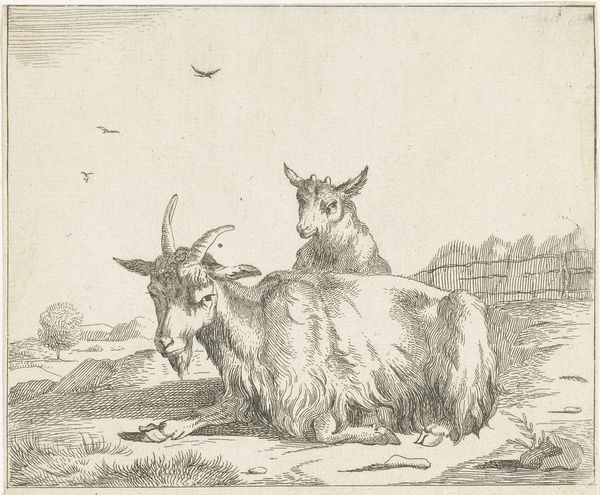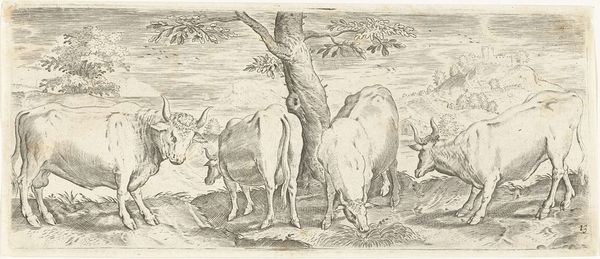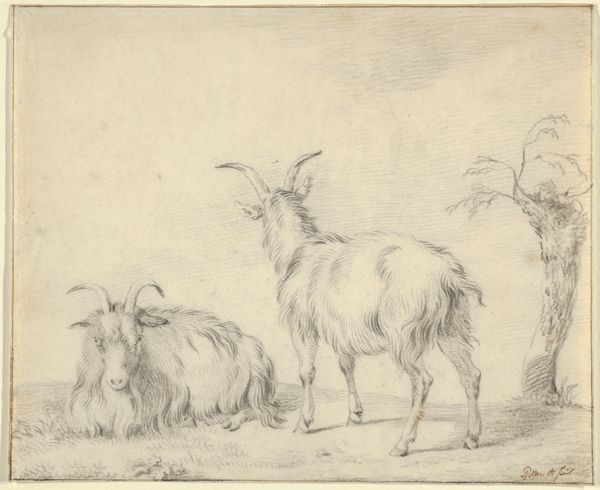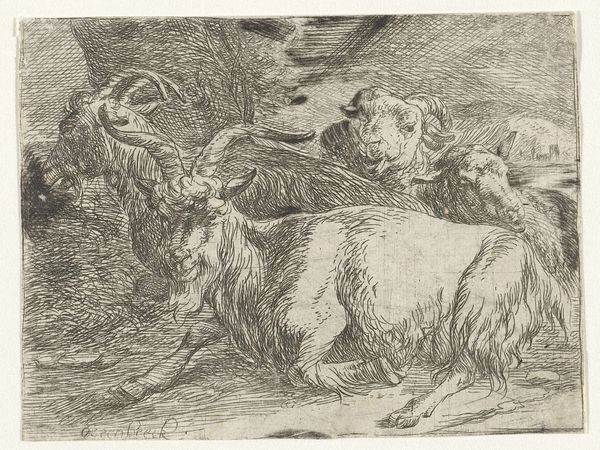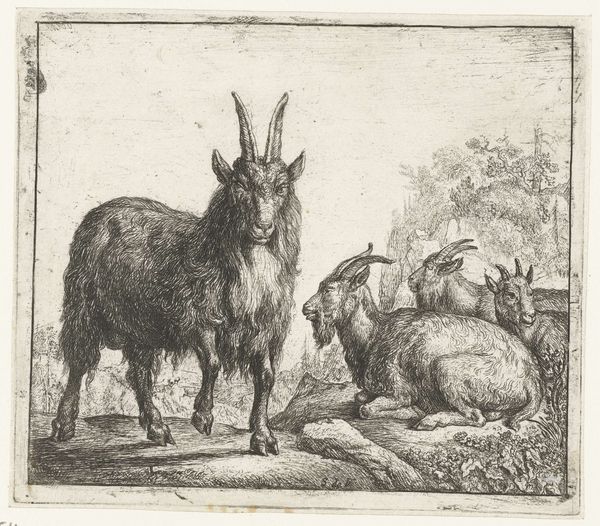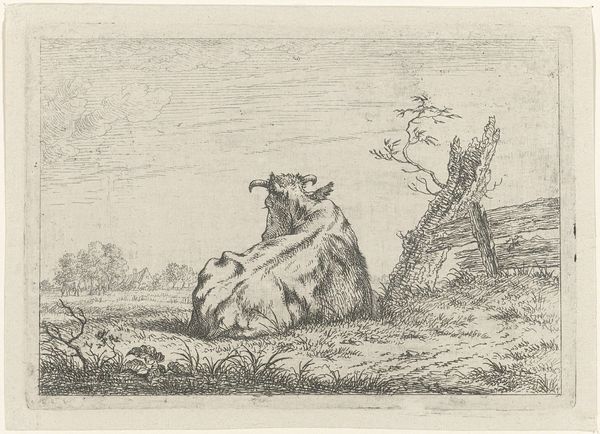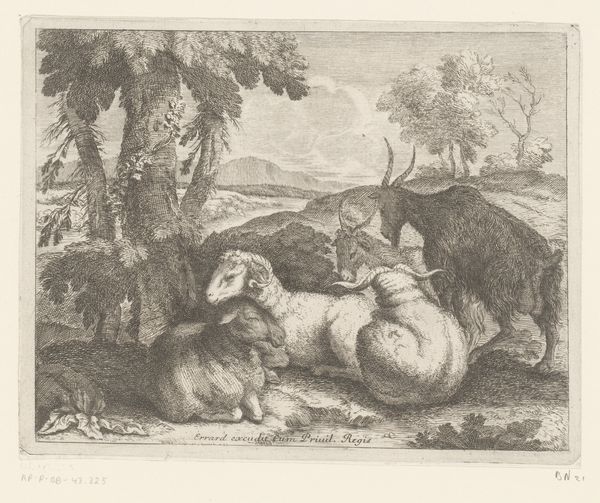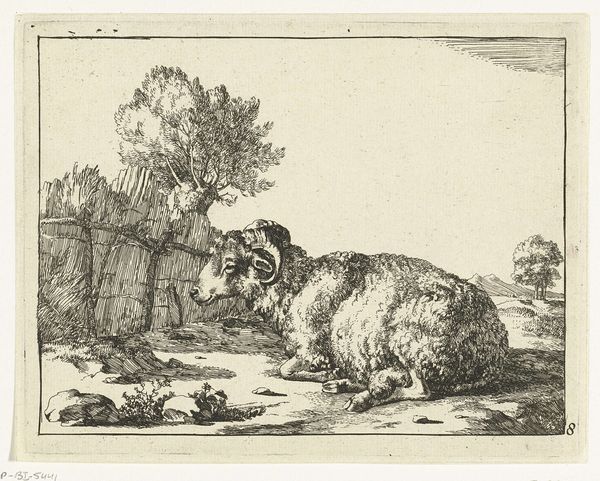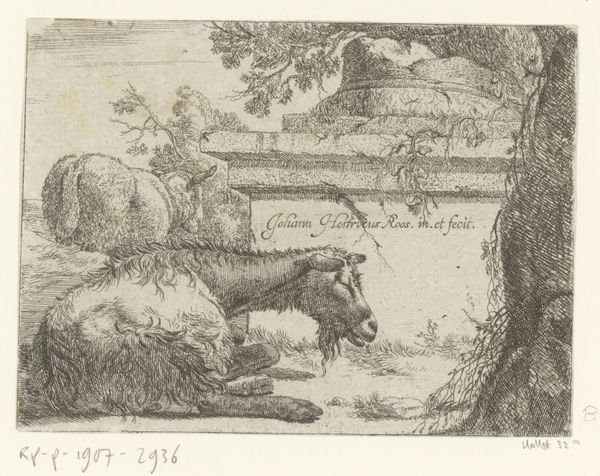
#
landscape illustration sketch
#
pen illustration
#
pen sketch
#
pencil sketch
#
personal sketchbook
#
pen-ink sketch
#
pen work
#
sketchbook drawing
#
sketchbook art
#
fantasy sketch
Dimensions: height 100 mm, width 135 mm
Copyright: Rijks Museum: Open Domain
Jan van Ossenbeeck made this etching of goats under a tree sometime in the mid-17th century. Looking at this pastoral scene, it's easy to overlook the social realities shaping its creation. Ossenbeeck was Dutch, and his career coincided with the Dutch Golden Age. The Dutch Republic was a major economic and colonial power, but this wealth relied on a complex web of trade, labor, and extraction from other countries. Although this image shows goats, the wider genre of animal paintings in the Netherlands was thriving, and this could reflect an increasing awareness of and fascination with the natural world, fueled by global exploration and trade. Furthermore, the art market itself was growing, with more artists producing work for a wider audience. To truly understand this etching, we might delve into the economic history of the Dutch Republic, and the ways in which its wealth shaped artistic production and consumption. By consulting archival sources and economic data, we can gain a richer understanding of the social conditions that made this image possible.
Comments
No comments
Be the first to comment and join the conversation on the ultimate creative platform.
